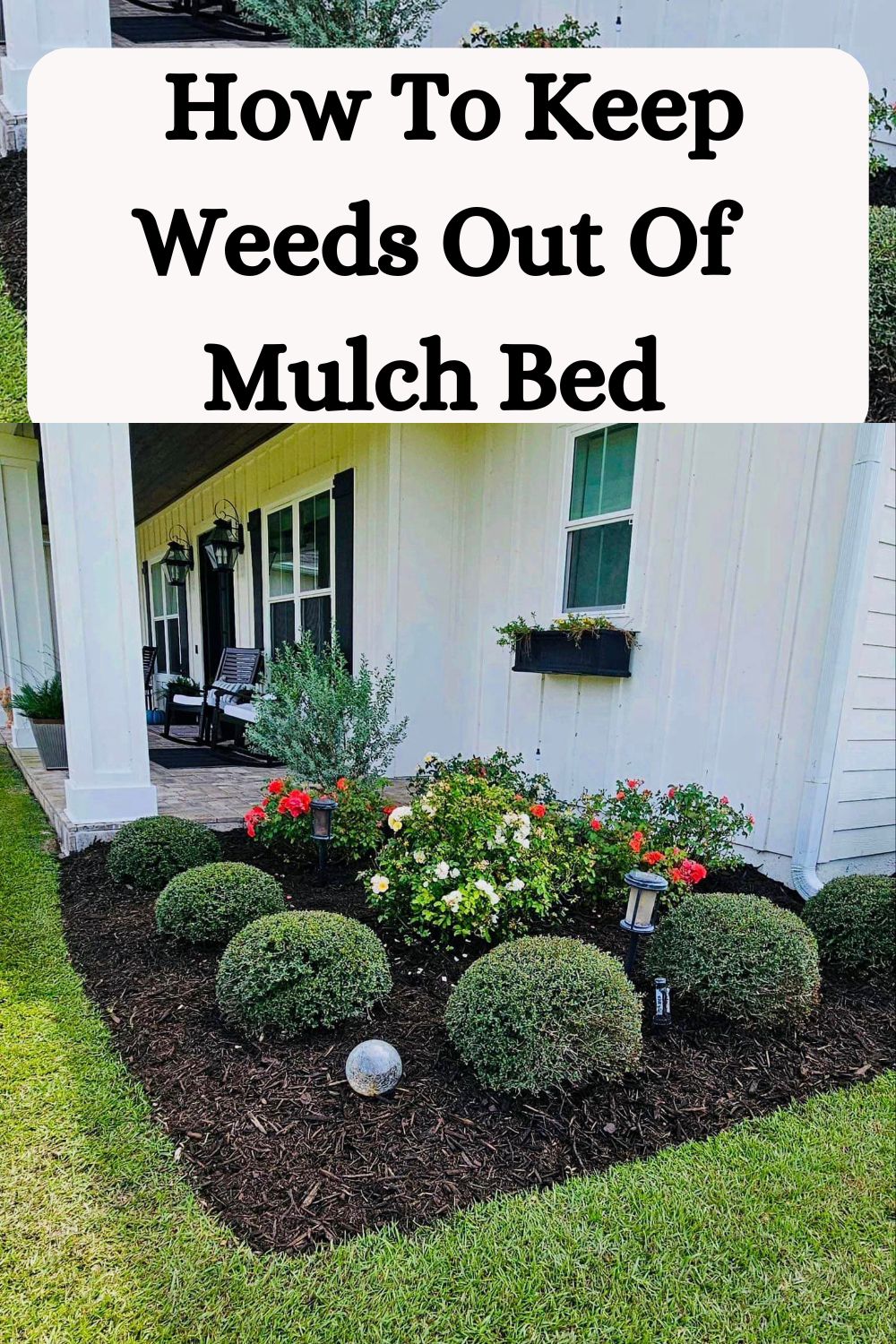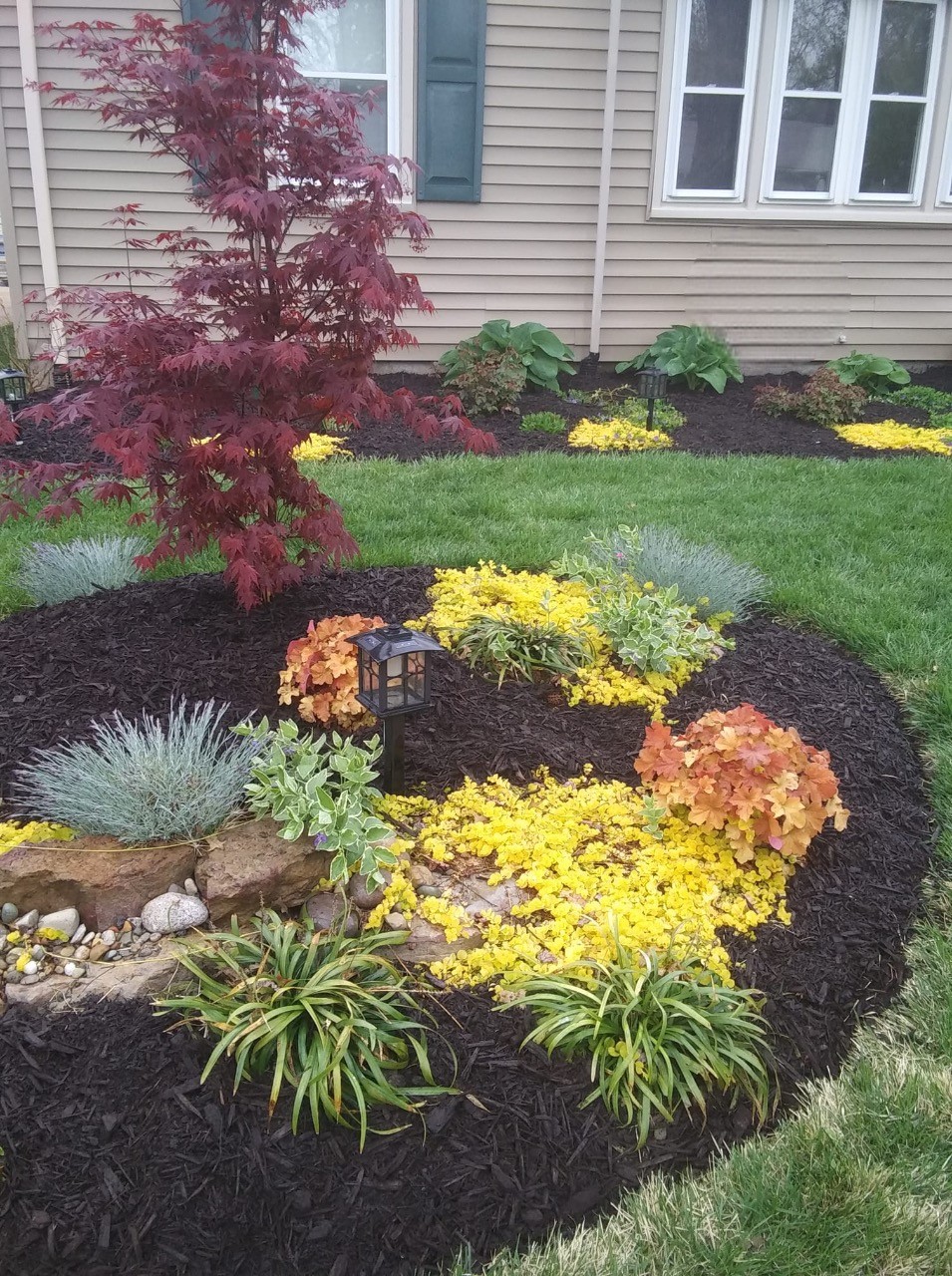Mulch isn’t just for aesthetics; it’s a fantastic tool for moisture retention, temperature moderation, and weed suppression. However, we don’t always get lucky, as weeds often find a way to creep out of mulch.
This naturally raises the question, “How do I keep mulch out of mulch?” Keeping weeds at bay in mulched areas is crucial to maintaining a tidy and healthy flower bed or garden. With the right strategies, you can keep these ugly, invasive, and annoying plants out of your mulched areas.
Read this comprehensive guide on ways to prevent weeds from growing in mulch beds.
How To Keep Weeds Out Of Mulch
1. Thoroughly Clear The Area Before Mulching
Start by meticulously removing existing weeds and their roots from the area you plan to mulch. Ensure you eliminate weeds, as any remnants you leave behind can regenerate and spread.
Before taking out the weeds, identify the type because this knowledge will help in understanding their growth patterns and the best methods for their removal.
Related Posts:
- Easiest Way To Pull Weeds Fast
- How To Keep Weeds Out Of Flower Beds Naturally
- 3 Ingredient Homemade Weed Killer
Use a shovel or fork to dig deeply and remove the entire root system of perennial weeds with deep roots. In contrast, grasp annual weeds or shallow-rooted plants at their base and gently but firmly pull them upwards, ensuring you remove the entire plant, including the roots.
2. Soil Preparation
Once all the weeds are gone, prepare the soil by loosening it with a garden fork or tiller. This process helps aerate the soil, promoting optimal conditions for desired plant growth while hindering the growth of weeds. It also enhances root growth, microbial activity, and water infiltration.
Do not till excessively so you don’t disrupt the soil structure. Instead, aim for a balance, especially in established garden beds, to maintain the soil’s natural ecosystem.
Note
Allow the soil to settle for a day or two before applying mulch, as it ensures a stable foundation for your mulch layer.
2. Choose The Right Mulch
Select a high-quality mulch appropriate for effective weed suppression and overall garden health. The options are organic and inorganic mulches. Straw or hay mulches deter weeds and break down relatively quickly, providing nutrients to the soil and ideal for vegetable gardens.
Wood chips or bark mulches also decompose slowly, replenishing the soil with nutrients over time. They effectively suppress weeds and help retain soil moisture.
On the inorganic mulch side, gravel or rocks are worthy options as they offer long-lasting weed control and are suitable for areas with little plant growth.
Moreover, consider your home’s climate and location when picking mulch. For instance, pine straw may be ideal in acidic soils and warmer climates, while shredded hardwood might suit you better if you live in a cooler region.
In addition, match the mulch to the needs of your plants. For instance, acid-loving plants benefit from pine needle mulch is beneficial to acid-loving plants, while straw mulch is suitable for vegetable gardens.
Related Posts:
- How To Kill Weeds Growing In Driveways, Sidewalks, And Patios
- Simple Flower Bed Ideas For Front Of House
- 15 Weeds That Look Like Flowers
4. Adopt Proper Mulching Techniques
Your endeavor to keep weeds out of your mulch also depends on adopting the right mulching techniques. This involves proper application as well as mulch edging and boundaries.
When it comes to application, apply a layer of mulch that is 2 to 4 inches thick, as this thickness effectively blocks sunlight and inhibits weed growth. Also, spread the mulch evenly across the soil surface, ensuring consistent coverage without clumps or gaps.
To keep weeds from creeping into your mulched areas, install edging materials around the mulched area and clearly define the edges of the mulched area to make maintenance and weed control easier.
5. Utilize Weed Control Strategies
Another way to keep weeds from invading your mulched spaces is through weed control strategies. These include:
a) Landscape Fabric
Consider laying landscape fabric beneath the mulch because this fabric provides an excellent additional barrier to prevent weeds from emerging through the mulch layer.
This physical barrier blocks weed growth while allowing water and nutrient penetration. However, it may impede water and nutrient penetration, so use it judiciously. During installation, cut the fabric to fit the area, overlapping edges to prevent weed penetration through gaps.
b) Pre-emergent Herbicides
Apply pre-emergent herbicides to keep weed seeds from germinating and establishing in your mulched areas. These herbicides form a barrier in the ground that inhibits weed seed germination, preventing their emergence. During application, spread the herbicides uniformly to create a consistent barrier against weed seeds.
6. Proper Maintenance
Do not neglect your garden of flower bed after mulching it to avoid giving weeds ample time to germinate and grow. Instead, set a routine to inspect the mulched areas weekly or bi-weekly, especially during the growing season. During the scheduled checks, look for any signs of weed growth or thinning of the mulch layer.
Early intervention is fundamental when controlling weeds in mulched spaces. So, remove any emerging weeds immediately by hand-pulling or using appropriate tools to prevent them from establishing and spreading.
Also, periodically replenish the mulch layer to maintain its recommended 2 to 4-inch thickness. Check the mulch depth at the beginning of each growing season and top up as needed.
The edging around your mulched areas also needs to be maintained. Therefore, regularly trim and maintain them to prevent encroachment from grass or weeds. Additionally, keep clear boundaries by repairing or replacing your edging materials.
7. Proactive Weed Control
So, the strategies above help keep weeds from encroaching mulched areas, but how do you deal with the deals if they emerge anyway? There are effective solutions to this problem- natural weed remedies and chemical solutions.
i) Natural Weed Remedies
Explore natural ways of eliminating weeds from your mulched areas because these solutions are effective and do not entail relying on synthetic chemicals. Practical options include:
- Vinegar Solution: Mix household vinegar (5-20% acetic acid) with a small amount of dish soap (to help it adhere to the plant surface), then spray the solution directly on the weeds.
- Boiling Water: Pour boiling water directly onto weeds growing through the mulch to scald them.
- Corn Gluten Meal: Sprinkle corn gluten meal on the soil surface before weed seeds germinate. This product serves as a natural pre-emergent herbicide.
ii) Chemical Solutions
If weeds persist despite your efforts, consider using selective herbicides. These target specific weed types without harming surrounding plants. Apply these chemicals directly onto the foliage of the targeted weeds, following the recommended timing and dosage.
Summary
The battle against weeds is often tiring as it is typically a never-ending fight. While mulch is a weed control strategy, the irony is you’ll need to work to keep the weeds from emerging from the mulch. To achieve this, employ proactive measures, proper mulching techniques, regular maintenance, and be willing to try different eradication strategies.

Hey there, I’m Derek Schew, a writer for Lawnholic.com, where we cover everything and anything related to lawns. As someone who’s spent countless hours tending to my own lawn, I’m passionate about sharing my knowledge and helping others achieve the perfect yard. From lawn care tips to product reviews, I’m committed to providing our readers with the most accurate and up-to-date information available. So whether you’re a seasoned lawn enthusiast or just getting started, I invite you to join our community and discover the joys of a lush, green lawn.


